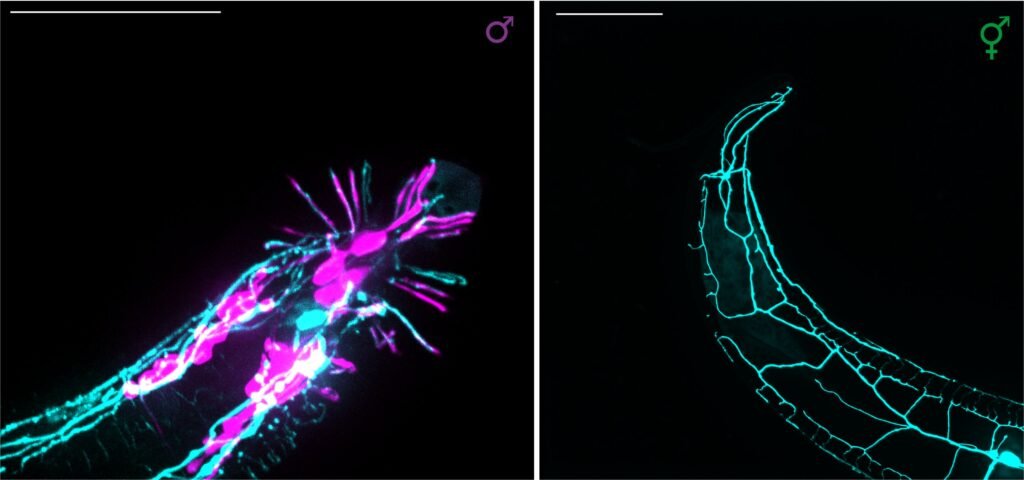C. elegans, a tiny nematode worm, has been a valuable model for studying sex-based differences in brain structure. This worm has two sexes, male and hermaphrodite, with each individual cell having a predetermined identity and lineage. Researchers from the Technion-Israel Institute of Technology have delved into the sexual dimorphism of these worms and made some groundbreaking discoveries.
In a study published in the Proceedings of the National Academy of Sciences, Dr. Yael Iosilevskii and Dr. Menachem Katz from Prof. Beni Podbilewicz’s Lab, along with Prof. David H. Hall from the Albert Einstein College of Medicine, found significant differences in a neuron called PVD between males and hermaphrodites. While PVD in hermaphrodites primarily functions in pain sensing, in males, it plays an additional role in mating behavior. Disruption in the development of PVD in males led to impaired mating behavior, making them slower and less coordinated.
The study sheds light on the structural differences in a single neuron between male and hermaphrodite C. elegans, highlighting the impact on behavior. This finding raises questions about the potential link between brain structure and susceptibility to neurological disorders in humans. While it is challenging to study individual neurons in the human brain due to its complexity, the simplicity of C. elegans provides a unique opportunity to explore these questions.
By studying the sensory neuron PVD in males, the researchers discovered that it retains a similar structure to hermaphrodites but extends additional branches into the tail fan, a male-specific organ for mating. This branching pattern is crucial for proper mating behavior in males, as disruptions lead to coordination issues. The unique sexual dimorphism in PVD structure and its behavioral implications offer new insights into sex-based neural differences.
The discovery of sexual dimorphism in a single sensory neuron in C. elegans opens up avenues for further research on how these differences impact cellular responses and organism behavior. This study not only enhances our understanding of neural development and behavior in worms but also provides valuable insights into potential brain differences between men and women in larger organisms.
Overall, the research conducted at the Technion-Israel Institute of Technology contributes to the growing body of knowledge on sex-based brain differences and their implications for behavior and neurological disorders. By utilizing C. elegans as a model organism, scientists can unravel the intricate relationship between neural structure and function in different sexes, paving the way for future discoveries in neuroscience.


